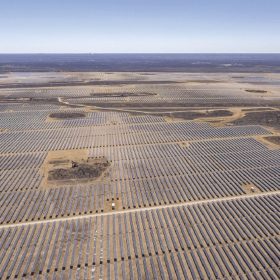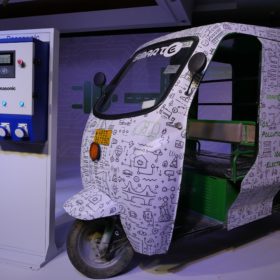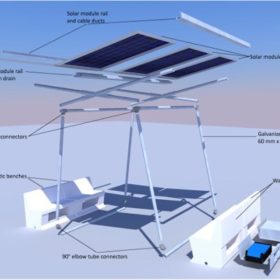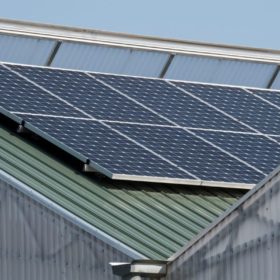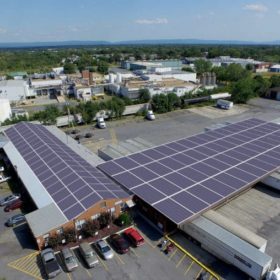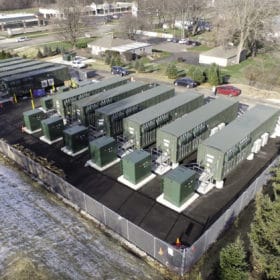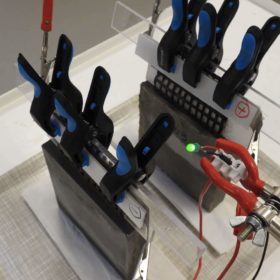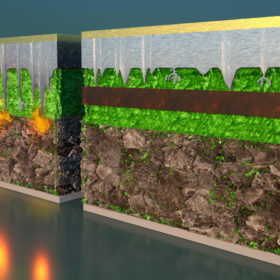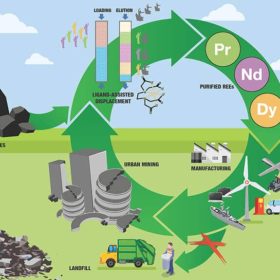The long read: Your solar+storage business plan
With many developers now working on solar+storage projects, it’s time to look more closely at specific business plans. Siobhán Green, lead on battery storage in continental Europe for Everoze, looks at three key questions.
FAME II subsidy scheme extended by two years
The second phase of the Faster Adoption and Manufacturing of (Hybrid) and Electric Vehicles (FAME) subsidy scheme to promote electric mobility in India will now run until March 31, 2024.
A solar pavilion for India’s rooftops
India’s energy transition will not succeed without rooftop PV and roll-out is hindered not only by a lack of household finance, but by the fact many of the nation’s flat roofs are enjoyed by residents. Germany’s international development agency has proposed a solution.
LNJ Bhilwara, Replus to set up a 1 GWh lithium-ion battery plant
LNJ Bhilwara, a diversified business group with presence in graphite electrode manufacturing, has formed a joint venture with Pune-based Replus Engitech to create lithium battery solutions for both e-mobility and stationary applications. The JV aims to have 1 GWh capacity operational in Pune by mid-2022 and eventually scale it to 5 GWh by 2024.
Gravity-based storage for distributed solar
An international research team has designed a residential solar-plus-storage system based on gravity. The system was built with a solar power generator, a bulk booster charge controller, an inverter, a solenoid device, a deep cycle battery, a pulley block, a geared motor, a microcontroller, and wire ropes. Its creators said the system is ideal for regions with high solar radiation. They found that, due to its high electrical requirements, the system needs to rely on high-power solar modules with an output of over 500 W.
Visaka forays into solar-powered EV charging business
Telangana-based Visaka Industries will set up electric vehicle (EV) charging stations powered by its ATUM integrated solar roof. According to the company, the ATUM solar roof, with PV panels integrated on cement boards, can generate 40% more clean power in the same given space than any other solar solution.
Pairing a battery with solar could cut its overall value, Berkeley Lab report says
Separating generation from storage usually delivers higher value, but it may also deliver higher costs, the report said.
Concrete battery for applications in buildings, rooftop PV
A prototype of a cement-based battery has been developed in Sweden for potential applications in buildings. Its creators claim it could become a solution to store electricity from rooftop PV and they do not exclude that it could also be used for the storage of large-scale renewables.
Harvard scientists unveil solid-state lithium battery that can be charged and discharged at least 10,000 times
US scientists have created a new design for lithium-metal, solid-state batteries that should avoid the formation of dendrites that grow into the electrolyte. Their multilayered battery could potentially recharge electric vehicles within 10 to 20 minutes.
Recycling rare-earth elements from dead lithium batteries
American Resources Corporation is developing a process to separate pure rare earth metals from lithium-ion batteries used in electric vehicles or power plants based on renewable energy. The technique is described as a two-zone ligand-assisted displacement chromatography (LAD) that is able to produce metals with high yields and purity of over 99%.
